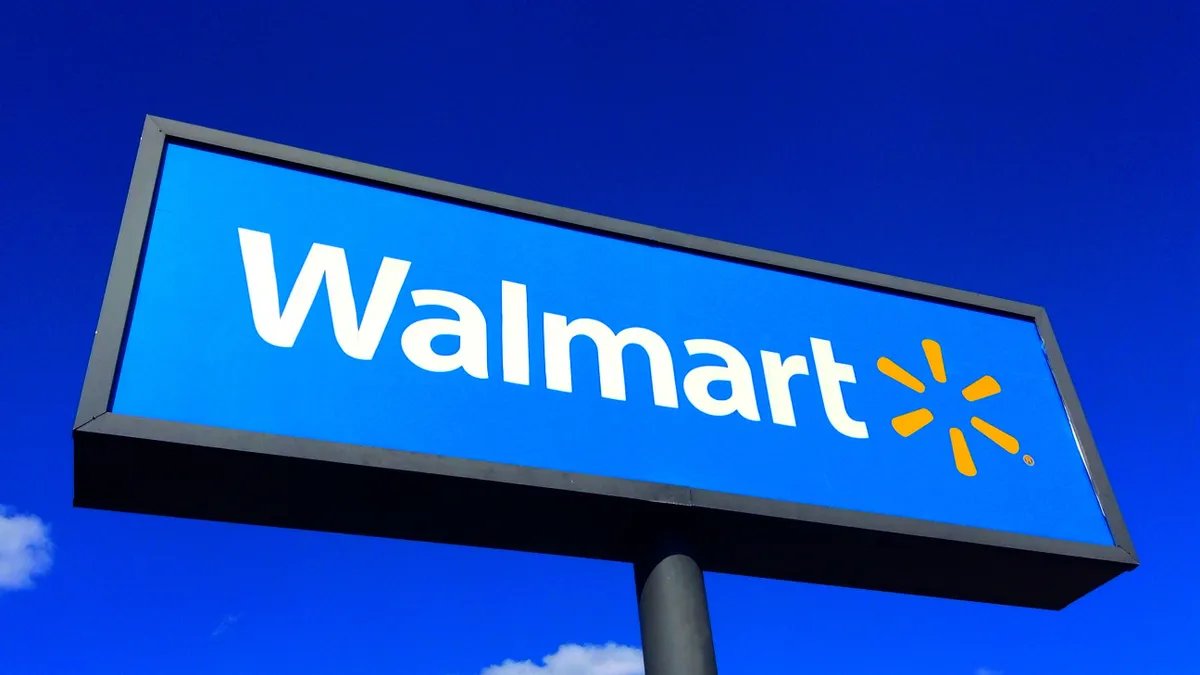Dive Brief:
- Walmart is using space in 42 of its regional distribution centers to create "pop-up eCommerce Distribution Centers" meant to help handle the increased volume of e-commerce orders, the retailer announced Thursday.
- The "pop-up" model provides flexibility to the company's fulfillment capabilities and allows it to increase capacity when it is experiencing peak-level volume, Greg Smith, the executive vice president of supply chain at Walmart U.S., wrote in a blog post.
- The regional distribution centers usually ship pallets of goods to stores and not individual SKUs to a consumer's home. Now the locations will handle both tasks and Walmart expects 30% of its holiday volume to be shipped from the pop-up locations.
Dive Insight:
Walmart's build-up of e-commerce fulfillment capacity is about more than physical infrastructure. Technology played an important role in the creation of the pop-up e-commerce distribution centers, Executive Vice President at Walmart Global Tech Srini Venkatesan wrote in a LinkedIn post.
"Our Multi-Channel Sourcing Engine (MCSE) scans the entirety of our fulfillment network in less than a second and will assign orders to these eDCs when it determines they offer the fastest and most efficient option to fulfill the order," wrote Venkatesan.
Venkatesan also credited improved pick times for popular SKUs and warehouse management technology for enabling e-commerce fulfillment from distribution centers.
The pop-up distribution centers are not meant to be permanent infrastructure for Walmart. Venkatesan said Walmart will have the ability to scale up and down with the demand the retailer is experiencing in its network.
By now it is no surprise the pandemic has led to an impressive uptick in online spending. E-commerce sales increased nearly 45% year over year in the second quarter to reach more than 16% of total sales, according to the latest figures from the U.S. Census Bureau.
Some in the industry see the move by Walmart as an attempt to keep up its competition with Amazon.
This "is a direct shot across the bow to Amazon," Meyar Sheik, the president and chief commerce officer at Kibo, a company that sells e-commerce platforms, said in an emailed statement. "The move from Walmart further levels the playing field against Amazon’s distribution and logistics advantage as it pertains to expedited shipping options such as one-day or same-day delivery."
In July, Amazon announced plans to increase the square footage in its fulfillment operation by 50%. RBC Capital Markets observed that much of the growth in Amazon's network is taking place with delivery stations, the facilities closest to the consumer. Amazon has grown its delivery station network from 150 in 2019 to about 400 when RBC released its research note in September.
Other companies have also taken the step, similar to Walmart, of shifting existing fulfillment infrastructure to focus on direct-to-consumer parcel delivery rather than its traditional role of restocking stores via pallets.
Home Depot added fulfillment capacity to its network as a result of "the tremendous growth in the digital space," CEO Craig Menear said at an investor conference in September
"Having the flexibility to adjust and deal with that volume was pretty important as well," Menear said."We did that by shifting a fulfillment center — that we had opened in the Chicago area that was going to be a market delivery center — in a matter of couple weeks, we converted that temporarily to a direct fulfillment center, shipping product direct to customers from our dot com business so that we could support the triple-digit growth."













